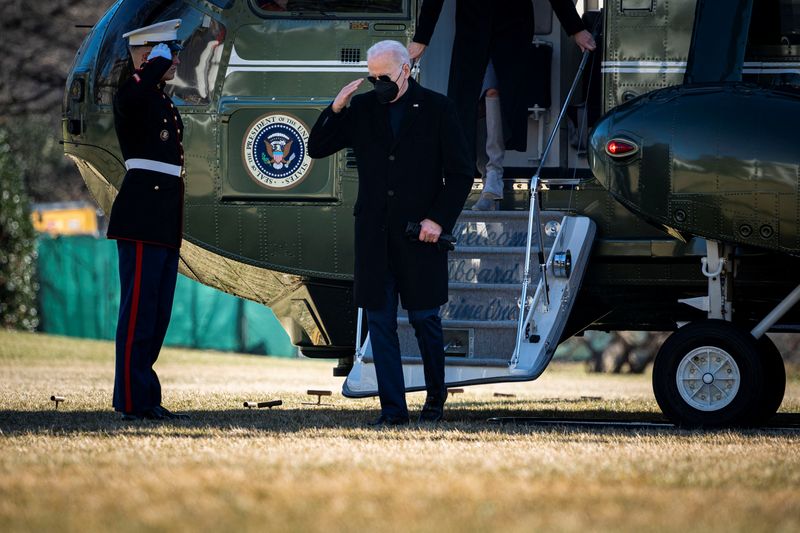By Mike Stone
WASHINGTON (Reuters) -President Joe Biden is expected to ask Congress for a U.S. defense budget exceeding $770 billion for the next fiscal year as the Pentagon seeks to modernize the military, according to three sources familiar with the negotiations, eclipsing the record budget requests by former President Donald Trump.
Ongoing budget talks between Defense Secretary Lloyd Austin and the White House's Office of Management and Budget (OMB) have coalesced around a proposed defense request of higher than $770 billion for the 2023 fiscal year starting Oct. 1, the sources said. Negotiations are ongoing within the administration and the final amount could change before the budget request is made in the coming months, the sources added.
Two of the sources said that about $773 billion was going to be available for the Department of Defense and other needs would go on top of that, potentially pushing a total above $800 billion.
The Pentagon referred queries to the OMB, which declined to comment.
The national defense "top line" budget includes the Pentagon's budget for spending on salaries, tanks and stealthy F-35 jets made by Lockheed Martin Corp (NYSE:LMT) as well as funds for the Department of Energy's nuclear weapons programs and defense-related activities at other agencies.
The White House last week responded to the Pentagon's proposed budget request with a figure that was more or less on par with Austin's request, according to the sources, who spoke on condition of anonymity.
Among the top priorities for this budget are shipbuilding, developing capabilities in space, missile warning and modernizing the nuclear "triad" of ballistic missile submarines, bombers and land-based missiles, one of the sources said.
The budget would benefit the biggest U.S. defense contractors including Lockheed, Northrop Grumman Corp (NYSE:NOC) and General Dynamics Corp (NYSE:GD).
Another of the sources said that the nuclear modernization effort is seen as "must pay" in addition to Pentagon plans to continue to invest in research and development of weaponry to fight any potential future wars against China and Russia.
The Pentagon also plans to trim costs by retiring older weaponry like Littoral Combat Ships that are expensive to operate and older planes like the A-10, which the U.S. withdrawal from Afghanistan last year has made less essential because they are vulnerable to more sophisticated enemies.

The national defense budget request crafted during Trump's final year in office was for $752.9 billion. Congress then increased that number by $25 billion, ultimately landing at $778 billion for fiscal 2022.
One of the sources said it is anticipated that Congress would once again increase the president's national defense budget request, but the 2023 budget cycle is only beginning. Biden's State of the Union address to Congress, scheduled for March 1, is viewed as the kickoff.